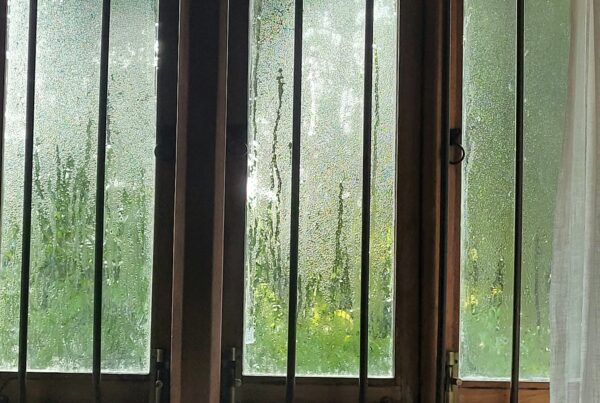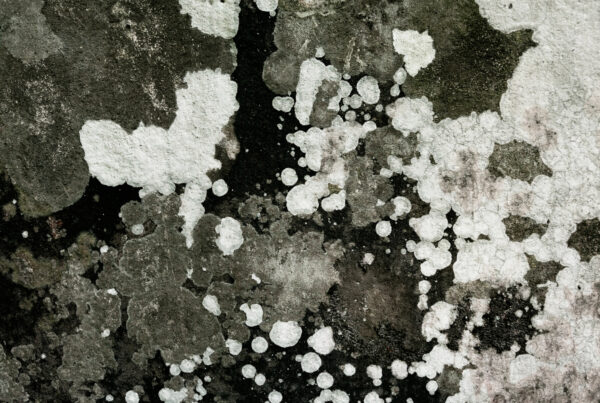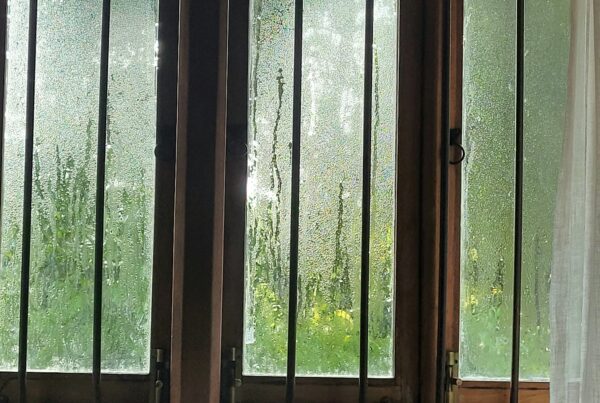Musty smell after water damage is unpleasant, but it can also signal hidden moisture and potential mould and mildew growth that can threaten your property and pose health risks. Decisive action matters to eliminate musty smells; failing to do so can result in ongoing dampness issues.
These recommended methods for removing musty smell after water damage, essential safety precautions, professional drying techniques, and clear intervention indicators will help restore your property to smelling fresh again.
Important Safety Precautions Before Starting Clean-Up
Water damage creates hazards that need careful assessment before starting remediation work.
Electrical safety measures
Turn off the electricity at the consumer unit if standing water exists near the sockets or wiring. Never use mains-powered equipment until a qualified electrician confirms that it is safe. Battery-powered torches provide safe alternatives during initial assessment.
Identifying water contamination levels
Clean water from burst pipes poses minimal health risks, but grey water from appliances or black water from sewage requires professional handling. Contaminated water carries bacteria, viruses, and parasites. The musty odour from contaminated water indicates dangerous microbial growth needing specialist treatment.
Personal protective equipment requirements
- Waterproof gloves prevent contaminated water contact
- FFP3-rated masks protect against mould and mildew spores
- Eye protection shields against splashes
- Waterproof boots prevent foot injuries
- Disposable coveralls protect clothing and skin
Step 1: Stop the Water Source Immediately
Drying will not succeed while water continues to enter your property. Stopping the source prevents further damage and allows effective remediation to eliminate the musty smell.
Internal leaks require immediate stopcock shut-off. Know your main stopcock location- it is often under kitchen sinks, in downstairs toilets, or outside near boundaries.
Building leaks from roofs, gutters, or walls need emergency repairs. Temporary tarpaulins prevent additional ingress while waiting for permanent fixes. Our penetrating damp solutions identify and provide clear solutions to fix hidden water sources causing persistent musty odours.
Step 2: Remove Standing Water and Saturated Materials
Speed matters as each hour’s delay increases mildew growth and intensifies musty smell. Extract bulk water before detailed drying.
Water extraction methods
Wet-dry vacuums remove standing water from hard surfaces. Use submersible pumps for flooded basements. Open doors and windows immediately to ventilate naturally.
Materials needing disposal
Porous materials saturated for over 48 hours harbour a permanent musty odour:
- Carpets and underlay trap moisture and mildew spores
- Saturated plasterboard loses structural integrity
- Wet insulation becomes permanently compressed
- Upholstered furniture absorbs contaminated water deeply
- Paper products develop mould and mildew quickly
Step 3: Dry All Affected Areas Thoroughly
Adequate drying removes the moisture that causes a musty smell. Keeping humidity at low levels prevents mould and mildew growth.
Ventilation and air circulation techniques
Create good airflow across wet surfaces. Position fans to ventilate and blow air across walls and floors. Cross-ventilation through opposite windows increases air exchange. Continue to ventilate for several days after surfaces appear dry.
Dehumidification requirements
Dehumidifiers extract moisture that ventilation cannot remove. Refrigerant models work above 15°C; desiccant types perform better in cold.
Run continuously until moisture meters confirm: below 15% timber, under 5% masonry. Empty containers regularly to maintain efficiency and get rid of the musty smell.
Step 4: Deep Clean and Disinfect All Surfaces
After drying, a thorough deep clean will help remove mould and mildew spores that cause a residual musty smell.
Hard surface treatment
Non-porous surfaces clean easily with disinfectants. Scrub thoroughly, removing biofilm. Rinse and dry completely. Steam cleaning adds sanitisation for surfaces, so they stay fresh.
Porous surface restoration
Wood requires suitable cleaners during deep cleaning processes. To remove contamination, sand affected areas and refinish with protective sealers. Concrete benefits from biocidal washes that penetrate deeply.
Treat visible mould and mildew with dedicated removers or white vinegar. Do not mix products – dangerous reactions occur. Test hidden areas first.
Step 5: Eliminate Lingering Odours
After addressing moisture and completing the deep clean, target residual odours to remove musty odours completely, leaving rooms smelling fresh.
Natural deodorising methods
- Baking soda absorbs airborne musty odours
- Activated charcoal provides superior absorption
- White vinegar neutralises smells
- Coffee grounds mask whilst absorbing moisture
- Essential oils add pleasant scents for smelling fresh results
Air purification systems
HEPA purifiers capture mildew spores that cause odours. Ozone generators deodorise powerfully but require vacant properties. UV-C purifiers destroy odour-causing microorganisms.
When Professional Water Damage Restoration Becomes Key
Some situations require professional expertise to get rid of musty smell after water damage safely.
Contamination indicators
Black water from sewage contains pathogens needing specialist decontamination. Grey water carries bacteria that standard cleaning cannot eliminate. Professional equipment ensures thorough remediation.
Structural concerns
Water penetrating cavities or structural timbers needs professional drying. Hidden moisture produces a persistent musty odour despite surface drying. Damp proofing services address the underlying moisture that causes these persistent odours.
Persistent odour problems
A musty smell returning indicates hidden moisture or inadequate treatment. Professional moisture mapping locates concealed damp. Specialist treatments eliminate embedded odours that standard methods cannot reach.
Extensive mould and mildew require professional remediation to prevent health risks. Rising damp issues often accompany water damage, creating ongoing moisture that perpetuates musty smells.
Restore Your Property with Expert Water Damage Solutions
Removing musty odours after water damage requires swift action, suitable equipment, and systematic treatment that addresses moisture sources. We bring 30 years of experience with advanced technology to remove odours, leaving your property looking clean and smelling fresh.
Our approach identifies hidden moisture, removes contamination, and implements prevention strategies, ensuring musty odours do not return. Refresh PSC delivers complete solutions as registered installers for leading waterproofing systems with insurance-backed guarantees.
Contact us today for a professional assessment and to get rid of musty smells permanently.



